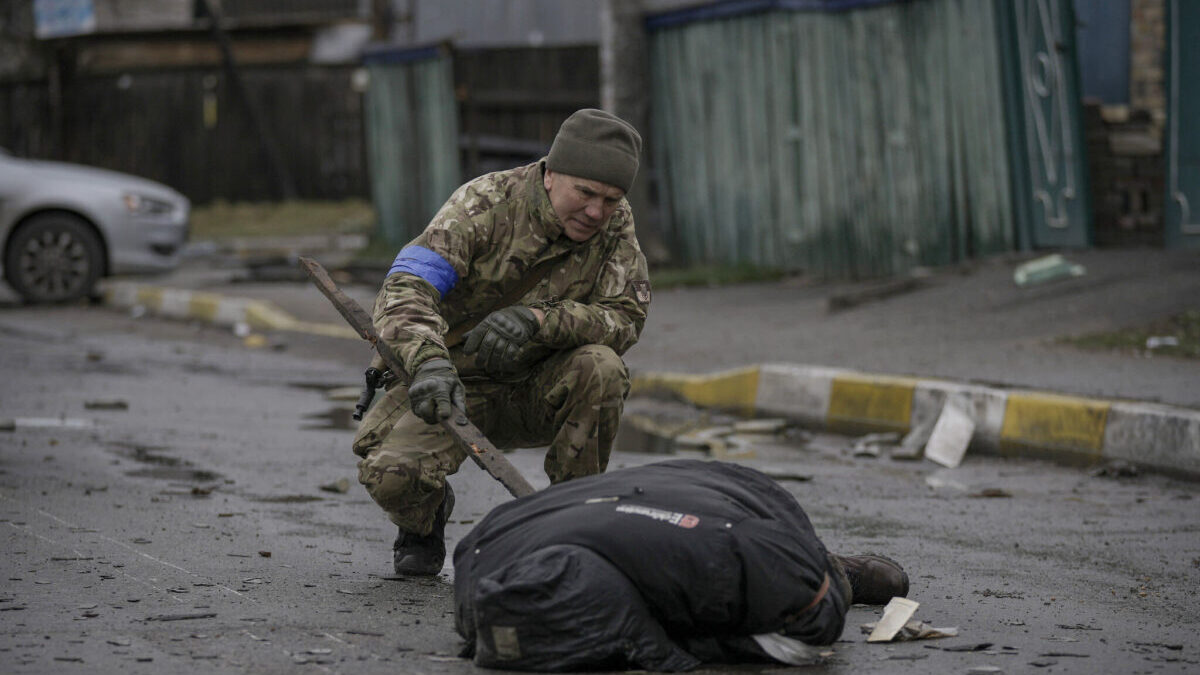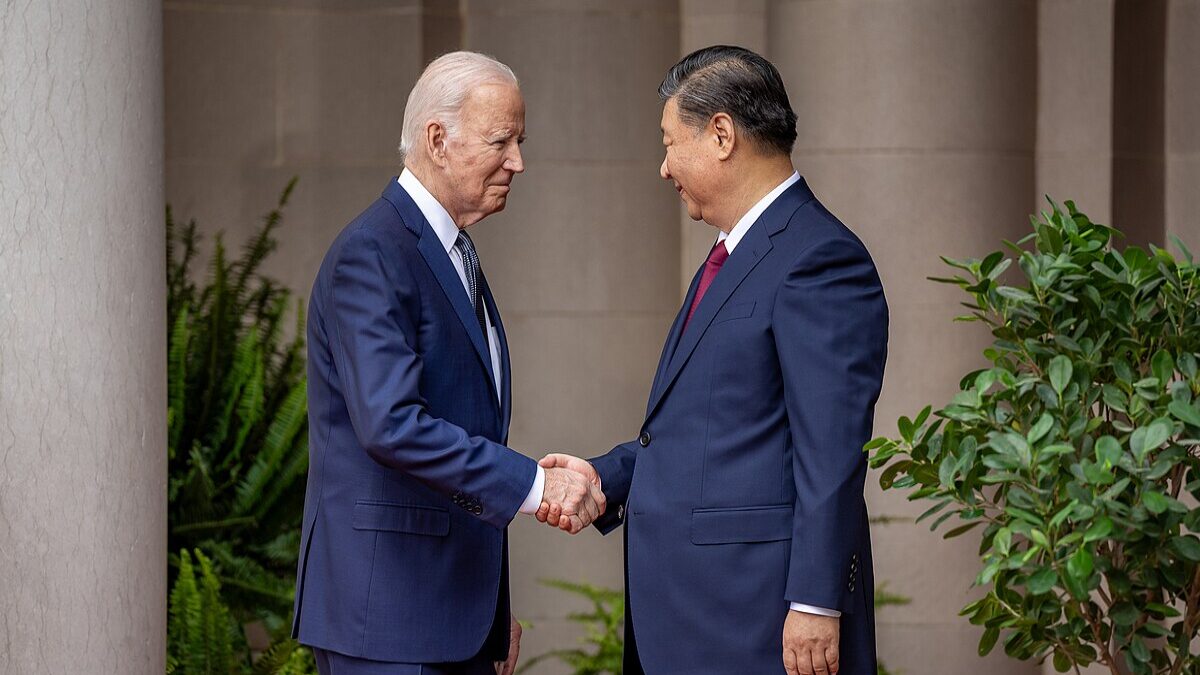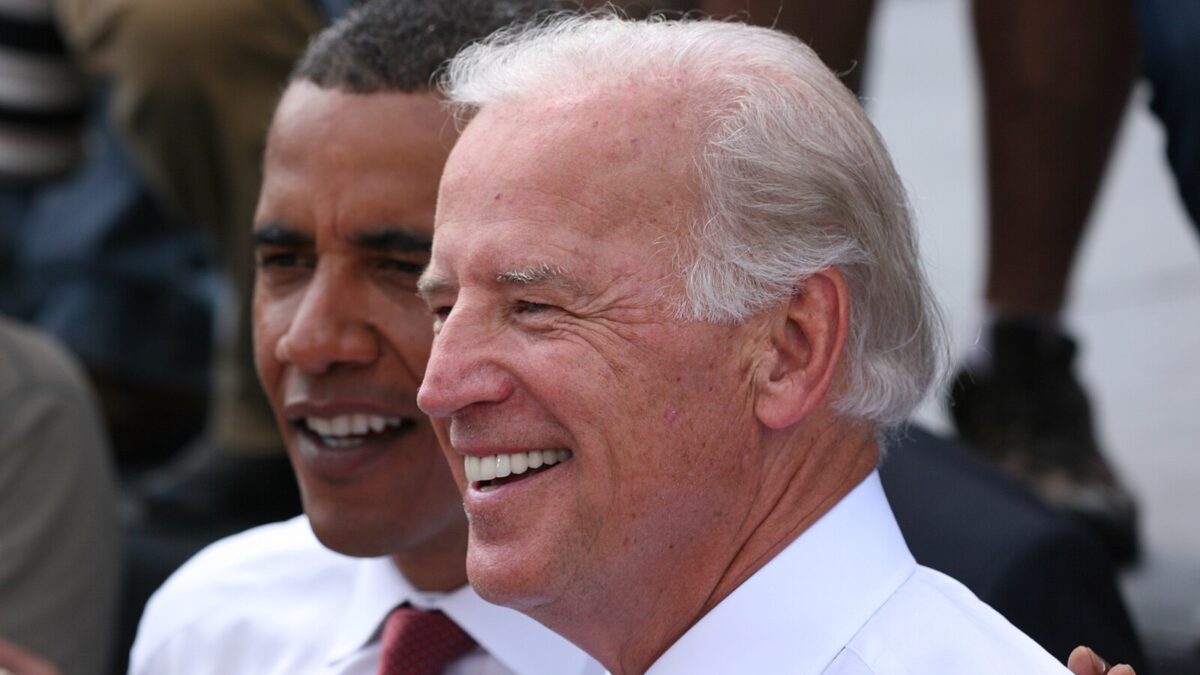
“The war in Ukraine might be deadly but at least it’s good for Boeing!” That’s the latest message coming from advocates for unending foreign aid to Ukraine as the war with Russia drags on into its third year.
The horrifying conflict, with too many scenes like the one below, could have ended more than a year and a half ago. Instead, Western leaders prolonged the conflict over stubborn demands to keep Ukrainian membership in the North Atlantic Treaty Organization (NATO) on the table, and, apparently, justify spending billions in taxpayer dollars to enrich the military-industrial complex.
On Friday, the Washington Post awarded Republican columnist Marc Thiessen a full page to expand upon the war’s explosive profits for the defense industry. Now we know under what circumstances the Washington Post is willing to award an entire page to a Republican.
“Here is the best-kept secret about U.S. military aid to Ukraine: Most of the money is being spent here in the United States,” Thiessen wrote. “That’s right: Funds that lawmakers approve to arm Ukraine are not going directly to Ukraine but are being used stateside to build new weapons or to replace weapons sent to Kyiv from U.S. stockpiles.”
Thiessen goes on to admonish conservative lawmakers who’ve led the resistance against rubber-stamping unlimited aid to Ukraine.
“At a time when both major parties are competing to win working-class votes and strengthen the U.S. manufacturing base, our military aid to Ukraine does exactly that — it is providing a major cash infusion into factories across the country that directly benefits American workers,” wrote Thiessen. “In other words, as happens with foreign military aid, our aid to Ukraine is not only creating American jobs but also reinvigorating our dangerously atrophied defense industrial base.”
It’s a full-page ad for a memo broadcast by Ukraine’s top ally in the upper chamber two months ago.
“If you look at the Ukraine assistance,” GOP Senate Minority Leader Mitch McConnell told CBS, “a significant portion of what’s being spent in the United States and 38 different states, replacing the weapons that we send to Ukraine with more modern weapons, so we’re rebuilding our industrial base.”
A closer look at the numbers, however, reveals an overwhelming majority of Ukraine aid is going, and remaining, overseas. Just a fraction of the $113 billion already spent has gone to “rebuilding our industrial base.”
According to the Committee for a Responsible Federal Budget, about $67 billion of the $113 billion in Ukrainian aid went to defense. Of that $67 billion, about $27 billion went to “drawdown replenishment,” and $15 billion went to the U.S. military. Another $18 billion went to the “Ukraine Security Assistance Initiative,” nearly $5 billion went to the foreign military financing program, and $2 billion went to “other defense.”
Richard Stern, the director of the Grover M. Hermann Center for the Federal Budget at the Heritage Foundation, broke down what these numbers mean in an interview with The Federalist.
“All of the money that’s not military support,” Stern said, “is just aid we gave them. A lot of that is just cash, and so none of that directly comes back to the U.S. in any kind of real life.”
Of the military spending, Stern added, “None of it is money. All of its equipment. A lot of it is equipment that had already been produced, so that’s not supporting U.S. defense industries.”
So, who, exactly, is the war supporting in terms of its economic impact? It’s certainly not the average taxpayer. An analysis from the Heritage Foundation in August found the total aid to Ukraine cost taxpayers $900 per household. The major defense firms that make up the military-industrial complex, on the other hand, are polishing off their blood diamonds. America’s Big Five weapons manufacturers — Lockheed Martin, Northrop Grumman, RTX, Boeing, and General Dynamics — raked in more than $196 billion last year, according to the independent think tank Responsible Statecraft, with profits driven by Kyiv.
Ukraine, meanwhile, isn’t winning. In fact, the war-torn nation is now digging in for a turbulent winter and a long, drawn-out conflict.
“Ukrainian President Volodymyr Zelensky ordered the construction of an extensive network of fortifications aimed at holding back Russian forces, signaling a switch to the defensive posture after a monthslong Ukrainian counteroffensive yielded only small gains,” the Wall Street Journal reported Friday.
More will die, but at least Lockheed Martin is making some money.









